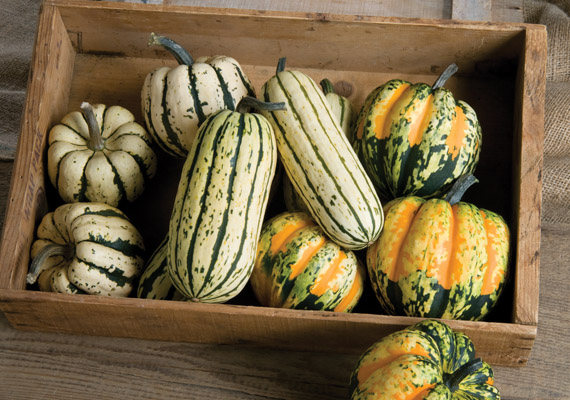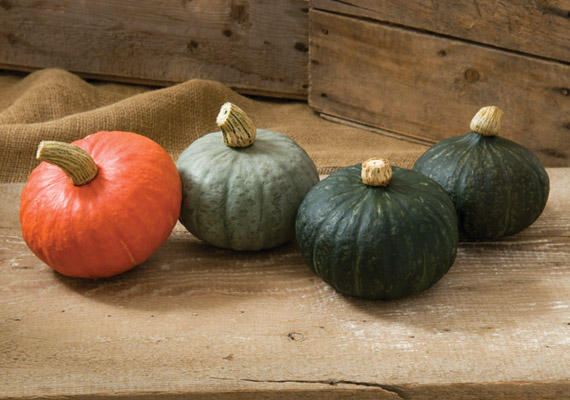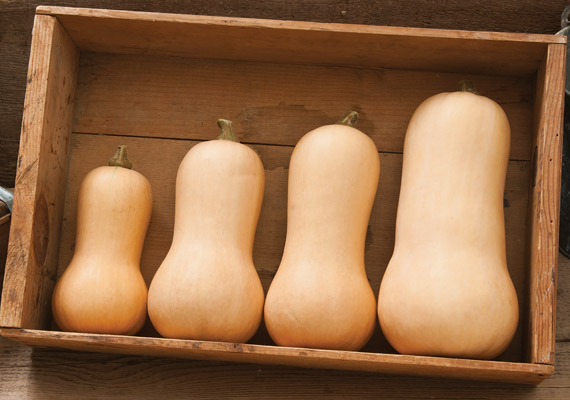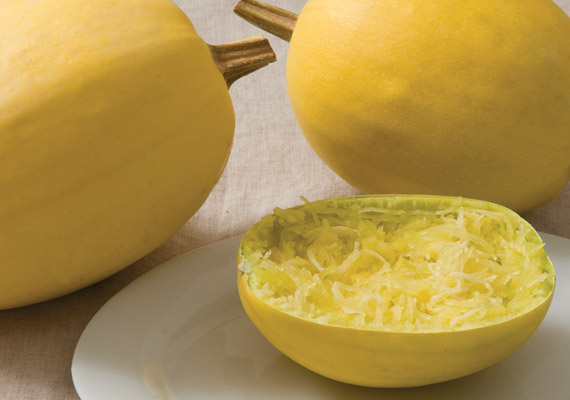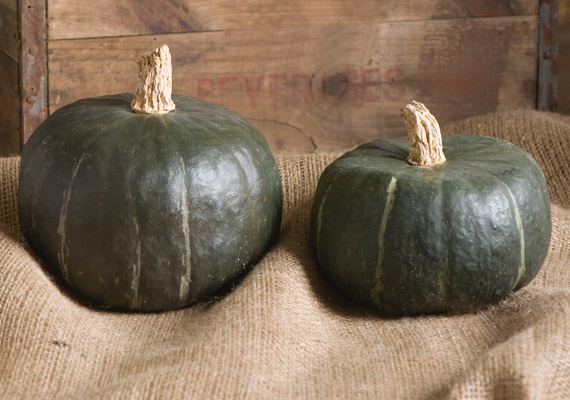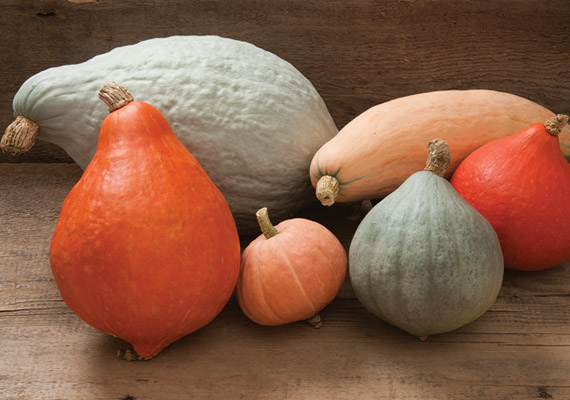- The Winter Squash Eating Experience | Basic Differences in Eating Quality Between 7 Types
- Hubbard Winter Squash | Key Growing Information
- 'Mambo' Winter Squash Variety Bred by Johnny's Selected Seeds
- Video: 'Night Shift' Acorn Squash | Bred by Johnny's
- Kabocha Winter Squash | Key Growing Information
- Grower Profile: Louie's Pumpkin Patch - Skövde, Sweden | Johnny's Selected Seeds 40th Anniversary
- Winter Squash | Key Growing Information
- Curing & Storage Chart for Different Kinds of Winter Squash
- Acorn Winter Squash | Key Growing Information
- Butternut Winter Squash | Key Growing Information
- Winter Squash Varieties | Comparison Chart (PDF)
- How to Choose Fall Cucurbits | Edible, Ornamental & Dual-Purpose Pumpkins, Squash & Gourds
- Eating Quality in Winter Squashes | Why Some Varieties Just Taste Better Than Others
- Video: 'Marmalade' Kabocha Squash | Bred by Johnny's
- Video: Miso-Glazed Kabocha Squash Recipe
- Delicata & Sweet Dumpling Winter Squash | Key Growing Information
- 'Block Party' Butternut Squash Variety Bred by Johnny's Selected Seeds
- Cucumber Beetle Lure Instructions | Tech Sheet (PDF)
- Winter Squash Production | Tech Sheet (PDF)
- 'Honey Bun' Sweet Dumpling Squash Bred by Johnny's
- Squash Success: From Seed to Storage | Johnny's Webinar Series
- Buttercup Winter Squash | Key Growing Information
- Classic Storage Crops | Post-Harvest Handling & Storage Guidelines
- Spaghetti Winter Squash | Key Growing Information
The Winter Squash Eating Experience
7 Winter Squash Types & the Eating Quality Differences Between Them

Vegetable Product Manager Pete Zuck
On This Page
To help differentiate the eating experience that each type of winter squash provides, I've compiled an overview of the main types Johnny's offers. I've highlighted some personal favorites as well, hoping to inspire you to try something new. Scroll down for a look at our "menu"!
By the way, in a separate article we explain Why Some Winter Squash Tastes Better Than Others. The article lists the variables that factor in to creating a great-tasting squash, and defines the qualities most sought after by people breeding superior winter squash and edible pumpkins — one of our own breeding team's strong suits. Follow these best-practice guidelines as you choose, grow, harvest, and store your squash, so that no matter what variety you grow, it tastes great when it comes time to eat it.
For post-harvest recommendations, our Winter Squash Storage Chart shows at a glance the optimal curing and storage periods for the various types. This should help you plan ahead, and enable you and your customers to enjoy each type at the pinnacle of its eating quality.
Whether you're brand new to growing or a seasoned winter squash expert, I hope this information encourages you to make space for at least one delicious new variety or type of winter squash this season.
1 • Delicata / Sweet Dumpling
These are the most delectable of the pepo squashes, often much sweeter than their close cousins, the green acorns. Delicatas in particular are wonderful to eat because they have very thin, edible skin when cooked; you don't have to bother with peeling them. Sweet dumplings have similarly sweet flavor in a slightly smaller package. 'Jester' is a JSS-bred variety that falls somewhere between an acorn and a delicata — like 'Sweet Dumpling', it is superior to your average green acorn in flavor and sweetness, and generally provides a slightly larger serving than 'Sweet Dumpling.' All three feature the same green-on-white color contrast that makes an attractive fresh-market display.
2 • Kabocha
I consider kabocha to be the pinnacle of winter squash, and I have been known to carry on ad infinitum about them — the dry, flaky texture; the incomparable sweetness; the complex flavor; the edible skin; the incredibly long storage…! Kabocha is the winter squash of record in Japan, and I've often wondered when it will finally see the limelight here in the US. (Johnny's breeding team spent over 25 years creating 'Winter Blush' and 'Sweet Jade' to that end — good breeding takes time.) Kabocha texture is more like that of roasted red potato, so if you are among those who think that squash eats like baby food, you will find this type to be a welcome change. A few of us at Johnny's research farm keep personal stashes of 'Winter Sweet', and around the first of February it starts showing up in the lunchroom. If you have not roasted a properly cured kabocha squash on a cold winter night, you are really missing out — here's one of my favorite recipes!
3 • Butternut
Butternuts are the ideal "ingredient" squash. While they are perfectly fine roasted on their own with a little butter and salt, their smooth, moist texture and uncomplicated sweetness make them the perfect base for pies, soups, curries — you name it, butternuts can adapt to the recipe. Johnny's has bred two workhorse butternuts with high sugars and more manageable size, 'Metro PMR' and 'JWS 6823 PMR'. They also feature good powdery mildew resistance (PMR) and short vines that professional growers will appreciate. Our 2014
4 • Acorn
Acorns are great for experiencing the first taste of roasted winter squash as the first chill of fall creeps in. Unlike butternuts, buttercups, and kabochas, they do not store well, and their peak eating quality is reached within 6–8 weeks of harvest. The exceptions are 'Starry Night,' and 'Night Shift,' Johnny's-bred organic acorns that are exceptional in many ways, including their ability to retain excellent eating quality right through the New Year. Split them down the middle, fill each half with a dollop of butter and a spoonful of maple syrup, roast and enjoy while you ponder the coming of another winter. Simple.
5 • Spaghetti
Spaghetti squash has enjoyed a rapid rise in popularity as a whole-food alternative to pasta. While spaghetti squash has lower nutritional density and less longevity in storage than most other winter squashes, its carbohydrate profile and ability to blend seamlessly with sauces and oils make it a versatile choice for easy meals that won't slow you down. It's great with pesto.
6 • Buttercup
Buttercup squash is a lot like kabocha with a belly button — but generally a little larger, a little moister, and not as nuanced in terms of flavor. These qualities allow buttercups to pair nicely with other flavors and textures, such as apples, grains, nuts, and cheeses. Johnny's 'Bonbon' is one of the best out there.
7 • Hubbard
Hubbards are an old tradition, and they are great for soups, ravioli stuffing, and other utilitarian purposes when you require a large quantity of squash flesh with mild flavor. They are also very nutritious. We grouped 'North Georgia Candy Roaster' with the hubbards because it is a maxima squash, but the 'Roaster' boasts much better flavor than the true hubbards. This fall, I split a 'Candy Roaster' lengthwise, deseeded it, poured pumpkin pie filling right into the two halves, and baked it for dessert. It was fantastic!
Learn More
If you'd like to learn more about what makes different squashes a unique and enjoyable eating experience, here are a few more resources from Pete and his colleagues on Johnny's research team.
- Pete's Miso-Glazed Kabocha Squash Recipe • Video
- Winter Squash Storage Guide • Chart of Peak Flavor, Curing & Storage Times
- Winter Squash & Edible Pumpkins • Why Some Varieties Taste Better Than Others • Article
- Winter Squash Varieties • Comparison Chart (PDF)
- View All Our Winter Squash Varieties • Product Listing


